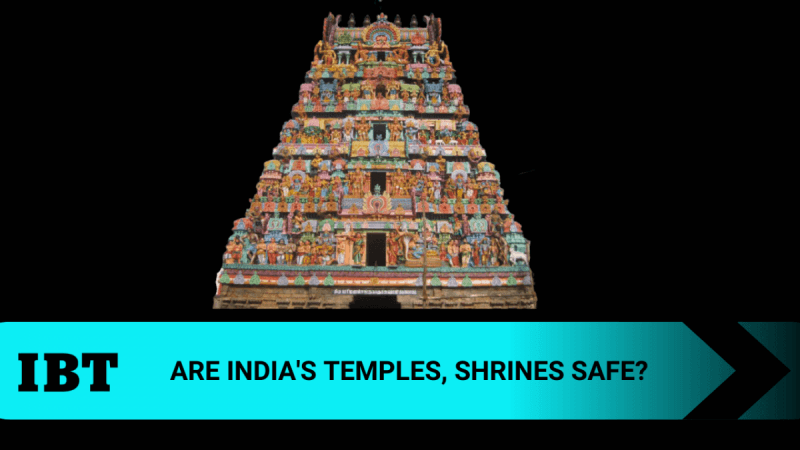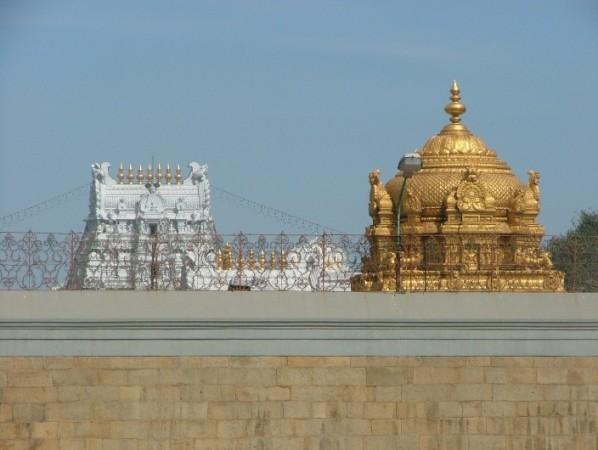This is not the first time that the security of religious places has come under scrutiny. A series of incidents in Andhra Pradesh recently have heightened the imminent question again.
On Sunday, in a broad daylight, two celestial brass idols were stolen from Kusma Haranatha temple which is situated near the Chamber of Commerce building in the busy Jinnah Tower Centre in Guntur. The two stolen celestial idols were 30 years old.

Alert police and swift action ensured that a suspect (habitual offender Polisetti Durga) was detained immediately and the two brass idols were recovered from his possession.
Around the same time, in a separate incident, in another city of Andhra Pradesh, Vizianagaram, police arrested three persons in three incidents of thefts in temples in the past one week. The local police officer B Raja Kumari said that they received complaints related to the theft of collection boxes and other items in three different temples.
While the recovery of idols or arrests closed these particular cases of temple theft, they opened a far bigger concern. How safe are our religious places and shrines? Statistics easily answer that question.
Statistics say it all

As per records, 163 temple offences were registered in 2015, in which 12 were of idol desecration/idol theft, 144 of ornament theft, six cases pertaining to digging of temple premises, while one was of chariot burning. These numbers have seen a steady increase in the years ever since.
In 2016, the number of cases rose to 207 and in 2017, as many as 139 temple offences were registered. The year 2018 saw a slight dip with 123 temple offences registered but once again in 2019, a whopping number of 177 temple offences were registered, out of which 151 cases comprised of ornaments' theft.
Andhra Pradesh DGP D Gautam Sawang while recently sounding a high alert across the state, informed that in 2020, around 228 cases of attacks on temples were registered in the state of Andhra Pradesh.
Time for some highlights, surveillance cameras and some action
There is no denial that it's the poor security measures that leave shrines vulnerable to all sorts of crimes and absence of surveillance and security measures often strengthen the gangs involved in these crimes.
Andhra Police initiated surveillance steps for religious places, under which for the first time, as many as 58,871 temples were geo tagged in 13 districts. Currently, there are 23,834 recognised temples under the supervision of the state government, while 25,000 temples belong to private entities. Majority of them lack surveillance cameras.
DGP D Gautam Sawang also informed that the police department has geo-tagged 58,871 temples and 43, 824 CCTV cameras were installed for 24x7 surveillance. The police have set-up communal harmony committees at state, district and police station level.
Security measures at shrines required at pan-India level
Given the complex geographic and diverse Indian landscape, security of religious places and communal harmony committees are urgently needed at pan-India level. There is no doubt over the possibility of miscreants desecrating religious places with the intention of creating communal tensions. There is no dearth of the reasons why this can happen anywhere in the country with heightened communal tensions, elections, political mileage among others.
Happened in the past, can happen again
Among a long list of such incidents, even torn holy books being found on the roads or meat being found in temples, are immediate triggers of communal tenstions.
Coimbatore last year found itself in the grip of tension when a suspected atheist threw raw pork meat on two Hindu temples. Blame game, conspiracy theories, heightened communal tensions, all ensued. In 2017, seven birs of Guru Granth Sahib were found partly burnt at a Gurudwara in a village of Muktsar district, though it was later attributed to a short circuit.
Since the incidents of desecration of temples and shrines across states are recurring frequently, questions on security of the shrines and safety of followers are often the major challenges. And they remain tied up to one underlying point -- Is the rest of India paying timely attention?















